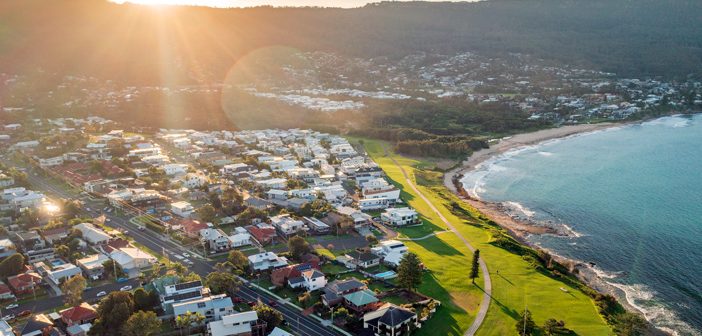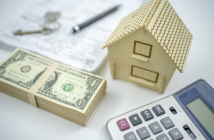Buying a home in an area of natural beauty can be a gift but also carry a sting in the tail if the area is prone to natural disaster. Despite the risks, picture-perfect locations are a perennial draw and people continue to move into risky areas. In fact the median sale price of homes with high fire risk was $550,500 in April 2022, compared with $431,300 for homes with low fire risk. In other words, the typical home with high fire risk sold for $119,200 (27.6%) more than the typical home with low fire risk—the largest premium in dollar terms since at least 2017.
Similarly, the median sale price of homes with high flood risk was $402,010 in the first quarter of 2021, compared with $353,783 for homes with low flood risk. That means high-risk homes sold for a record 13.6% premium, up from a premium of 10.1% in the first quarter of 2020.
If you’ve weighed the pros and cons, have access to affordable insurance and decided to buy, here’s some tips on planning ahead to reduce the risks of damage and loss with expert insights from the Washington Post, New York Times and others.
When buying in an at-risk area, the more upfront questions that home buyers ask about disaster-resistant home features, the better. A relatively modest upfront investment may prevent more costly damage down the road. Here are some measures you can take to assess your risk, buy smarter and better protect your home against disaster.
Tap into available resources and develop a checklist of preventive measures/mitigations.
Use climate/disaster risk websites to assess the threats in your area, by inputting your zip code. These were discussed in Part 1 of this series.
You can also tap into disaster-preparedness organizations like flash.org. Their Buyer’s Guide to Resilient Homes is a free tool that provides a framework for determining the best way to protect your home. It offers preparedness checklists to include in your home search process, questions to ask your real estate agent and steps for making your home disaster-resilient.
Disastersafety.org is another resource that offers recommendations (DIY and pro) to help owners protect their properties. Suggestions include cleaning gutters and rainspouts, and moving valuables out of basements and crawl spaces.
Real estate or insurance agents should be able to ascertain any loss history or, at minimum, ask sellers about their experiences. By looking up the building code for the time your home was constructed at inspecttoprotect.org, you can also locate your community’s disaster history; find out whether the code under which your home was built complies with current standards; and see recommended retrofits and upgrades.
If you live in a wildfire zone, ask your local fire department to help you find an inspector to assess your risk.
Get a specialized inspection.
Routine home inspections don’t take into account the risk of natural disasters. That is why it’s important to talk to your insurance agent to learn what they consider a risk. If the home is in a high-risk area, look for an inspector who specializes in peril. Existing homeowners may opt for a fortified home evaluation that assesses what your home has in place to withstand a storm and what improvements can be implemented to increase its resilience. As these kinds of inspection are less common, you might need to hunt for a specialist. Your best bet is to ask your insurance agent for a recommendation. If they don’t have one, look to the Insurance Institute for Business & Home Safety, which administers the Fortified Home program for further assistance. Expect to spend $500 to $1,000 for the evaluation and a subsequent list of recommendations.
Implement Mitigations.
Once you know the nature of the threats you face and preventive measures, there are plenty of affordable mitigation tactics. Here’s just a few:
- Hurricanes: Caulk and brace roof ventilation soffit vents to reduce the amount of water blown into your attic during hurricane-force winds and rain. Trim any trees in your yard that could pose a hazard to your home during high winds.
- Floods: Replace older foundation vents with engineered hydrostatic vents (flood vents). They cost in the region of $200 each, plus installation. Ensure that your sump pumps are working and that their batteries are fully charged. Elevate or flood-proof your furnace and/or air-conditioning system. If needed get a contractor to move it to an upper floor or build a wall around it.
- Thunderstorms: Get a lightning surge protector to safeguard electrical equipment, especially computers and valuable electronic devices. If hail is a perennial threat, install screens around your air-conditioning unit to protect the fins from damage.
- Wildfires: Clear a buffer zone around your house of at least five feet and keep it clear of brush and other highly combustible vegetation or debris. Also cover attic vents and chimneys with wire mesh or install noncombustible metal leaf guards over gutters to reduce the chances of wildfire embers entering your home or igniting debris.
We wish you good luck with your new home and a safe, secure investment in your future. We’re also here to help make it happen with competitive financing, no-spin advice and great rates. We offer exceptionally competitive home equity loans, and have our own home loan company for the very best in hand-holding service and exceptional rates.





